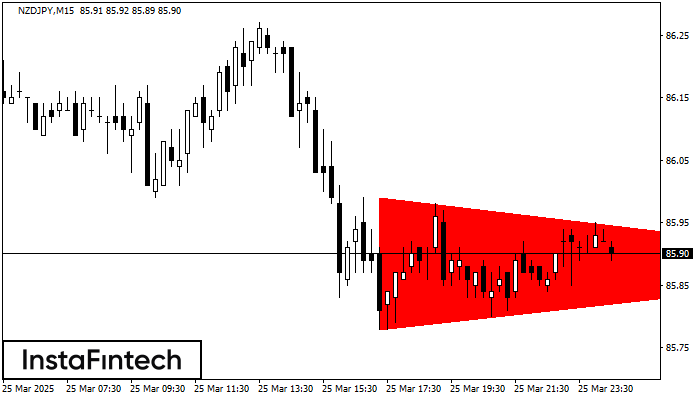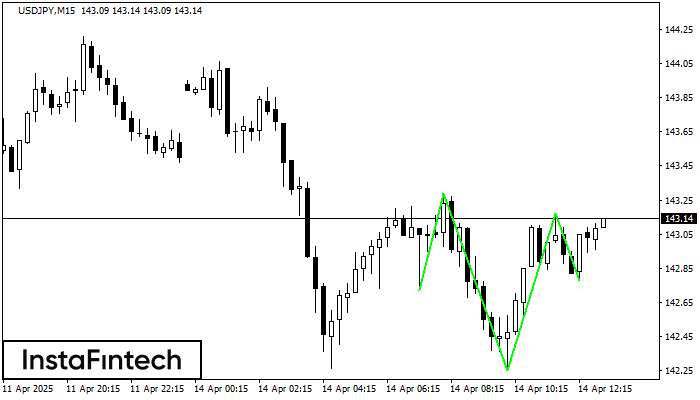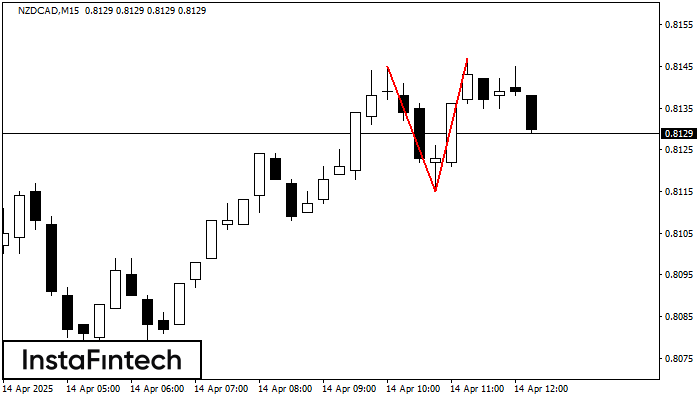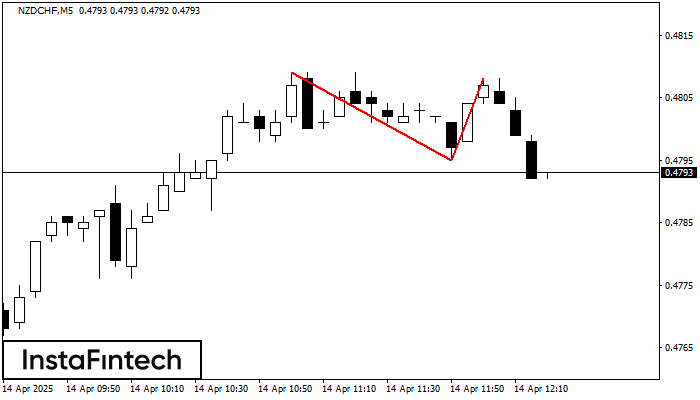Bearish Symmetrical Triangle
was formed on 26.03 at 00:39:05 (UTC+0)
signal strength 2 of 5

According to the chart of M15, NZDJPY formed the Bearish Symmetrical Triangle pattern. Description: The lower border is 85.78/85.88 and upper border is 85.99/85.88. The pattern width is measured on the chart at -21 pips. The formation of the Bearish Symmetrical Triangle pattern evidently signals a continuation of the downward trend. In other words, if the scenario comes true and NZDJPY breaches the lower border, the price could continue its move toward 85.65.
The M5 and M15 time frames may have more false entry points.
Vea asimismo
- All
- All
- Bearish Rectangle
- Bearish Symmetrical Triangle
- Bearish Symmetrical Triangle
- Bullish Rectangle
- Double Top
- Double Top
- Triple Bottom
- Triple Bottom
- Triple Top
- Triple Top
- All
- All
- Buy
- Sale
- All
- 1
- 2
- 3
- 4
- 5
Cabeza y Hombros Inverso
was formed on 14.04 at 12:00:29 (UTC+0)
signal strength 2 of 5
Según el gráfico de M15, USDJPY formó el patrón Cabeza y Hombros Inverso. El techo de la Cabeza está establecido en 143.17 mientras la línea media del Cuello se encuentra
Los marcos de tiempo M5 y M15 pueden tener más puntos de entrada falsos.
Open chart in a new window
Doble Techo
was formed on 14.04 at 11:30:12 (UTC+0)
signal strength 2 of 5
El patrón Doble Techo ha sido formado en NZDCAD M15. Esto señala que la tendencia ha sido cambiada de alcista a bajista. Probablemente, si la base del patrón 0.8115
Los marcos de tiempo M5 y M15 pueden tener más puntos de entrada falsos.
Open chart in a new window
Doble Techo
was formed on 14.04 at 11:20:29 (UTC+0)
signal strength 1 of 5
El patrón de reversión Doble Techo ha sido formado en NZDCHF M5. Características: el límite superior 0.4809; el límite inferior 0.4795; el ancho del patrón es 13 puntos. Es mejor
Los marcos de tiempo M5 y M15 pueden tener más puntos de entrada falsos.
Open chart in a new window




















